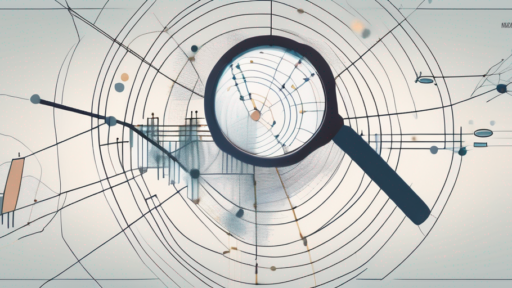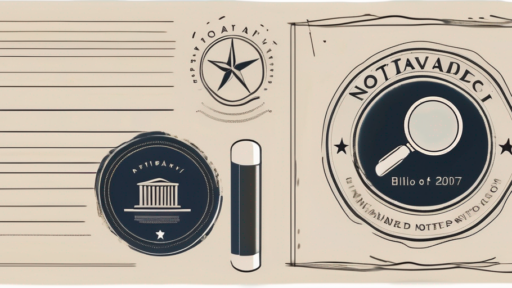With the explosion of information, and the constant use of digital devices, the demand for viable identity authentication and authorization service is now beyond question. This basic security infrastructure in today’s world does not only assure the safety of humans and businesses from virtual threats but also ensures that the data and other essential materials stay protected and free from unauthorized use. Hence, let’s start by seeing the value of identification before enumerating the different types of authentication, learning about the major role of authentication in data protection, and then getting to know the methods of authorization, which are very secure.
The Significance of Identification in Today’s World
In a world where things are executed at lightning speeds and everything and everyone are interconnected, the concept of identification is paramount. The correct identification of individuals is crucial for their safety as well as that of their sensitive data and resources. A good example of this is that a high-security facility management is expecting an unknown person for identification, or internet users trying to validate the legitimacy of the user’s credentials. Identification serves as the first checkpoint that an intruder will have to pass if he or she wants to execute an attack.
Identification as a process of confirming that someone is who they say they are has been around for centuries now. Documents were validated and transactions were certified by seals, and signatures were used as a sign-in and verification method in ancient times. With the furthering of society, new identity mechanisms have become more advanced by including pictures, thumbprints, and DNA.
Why Proper Identification is Crucial for Security
Can you picture a world in which anyone would be able to take any shape, be it human or non-human, and walk into any house without being identified? The world would become a mess, and the outcomes would be terrible. By means of efficient identification tools, a fortress of security is built. A person’s identity is verified through many forms, including showing a government ID card and undergoing biometric scans, thus the probability of the illegal entry is reduced tremendously which also leads to the fact that only the authorized people can enter the facilities.
Also, the process of identification not only secures the local space but also the cyber one. The digital era that we live in recently is the era of cybercrime, as the latter is increasing day after day. Identity verification of an online user is really important in cyber security and it should be part of all the institutions, especially the government. In order to protect the individuals from hackers who impersonate them leading to stealing their own, the good guys are using the help of the latter performing the verification of the identity of the customers.
The Role of Identification in Preventing Fraud
It is important to understand that identification remains a critical factor in eliminating fraud. The developments in the world of technology have made it possible for people with malicious intents to discover new ways of attacking the authentication systems. Organizations, by creating and implementing both reliable and trusty identification processes, can be able to eliminate these fraudulent activities. Among many things, the procedures can be used to check the legitimacy of the documents, or to verify the identities of the customers during financial transactions — their failure is thus a critical handicap to the fraudsters.
Moreover, the techniques of identification have been developed in such a way that they can defo the tactics of the cyber criminals well . Biometric identification, such as facial recognition and fingerprint scanning, gives an additional layer of security. These systems are very difficult to copy or counterfeit, which means it becomes quite challenging for fraudsters to socially fool biometric identification systems.
However, we should realize that besides the benefits of identification, there are also some drawbacks. It is the duty of the security personnel to find a way of striking a balance between security and privacy. This agreement will see to it that the rights of the people using the system are upheld while the environment remains safe. Moreover, the identification procedures must be to be up to date with the threatening circumstances time and again, pounding then with the latest defences to keep the intruders at bay.
To sum up, correct identification remains the core point in preventing fraud and, therefore, should be the first step in the proper operation of the
in our modern world. It is a crucial gatekeeper, keeping security in place and making sure that unauthorized access and fraud won’t happen. The techniques of identification will get more and more sophisticated over time as technology advances, giving birth to more capable and secure ways of verifying the individual’s identity.
Exploring Different Forms of Authentication
Identification sets the stage for the next crucial step in modern security: authentication. Authentication processes allow systems and organizations to verify the identity of an individual or device to ensure authorized access. Let’s take a closer look at the different forms of authentication and their pros and cons.
Understanding the Pros and Cons of Password-based Authentication
Password-based authentication is one of the most widespread methods currently in use. It comprises users giving a unique combination of symbols as a guarantee of their identity. Even though passwords have the convenience of use, they come with their own set of weaknesses.
When users have passwords with easy patterns that can be easily guessed, they expose the systems to the risk of becoming targets of attacks. Criminals can apply different methods of force, like brute force and dictionary attack, to break passwords and gain illegal access to sensitive data. Implementing this, it is important to remind users about the strong, complex passwords that they have to create, as well as changing their passwords frequently, to decrease the risk of a potential attack.
Apart from that, password-based authentication expects users to remember their passwords. This in itself can already be a huge issue, particularly when individuals have several accounts on different platforms. For this reason, the users will likely be reusing or writing their passwords down, which only makes matters worse regarding security.
However, using the password as a means of authentication still has its own positive points. It is a well-known and is widely accepted method that is understandable and easy to implement. It also provides an easy option for password recovery, where users can easily reset their passwords when forgotten.
Biometric Authentication: The Future of Security
Biometrics makes a great number of cybersecurity advantages accessible through the use of fingerprint recognition, facial recognition, and iris scans. These ways of identification are not only hard to replicate but also provide a high level of security.
Apart from the fact that biometric technology is simple and flexible to use, it also has several other advantages compared to traditional password-based methods. First of all, the process of remembering long, complicated passwords and thus, the frequent occurrence of weak or easily guessable access credentials to these users, is completely avoided, and, respectively, theft of a user’s identity is unlikely to happen.
Subsequently, the usage of biometric authentication significantly accelerates the action of the user who gains the benefit of instant access to the system without the necessity of writing/typing the credentials each time or remembering the need to reset them. This is indeed a consumer delight.
Of course, it’s not only about the technical aspects that come with biometric authentication; there is a need to think about the ethical and privacy issues as well. The whole process of having the biometric data saved and getting it is itself a matter that will need further engagement of the user pertaining to the legal standards that abide by the policy. The biometric information and the individual’s actions could be of grave danger in the hands of the wrong people, and the unregulated transfer of this information and its exposure to any possible misuse.
It’s normal that the hybrid approach, password plus biometric authentication, should coexist with its advantages and disadvantages. Although the password-based method is rather a conventional method and is widely used and therefore is well familiar to the majority of people, one cannot neglect that it is vulnerable to a number of security issues. Still, on the other hand, the
introduction and usage of the faithful and politically sound biometric data system is subject to a number of criticisms and has many speaking against it. Privacy of users’ data, security, and control fall into one of the main aspects in demand of on-time solution-making by the developers and users.
If the business is still not moved by the claims of inaccuracy and reliability of a biometric system and considers implementing it for profit, the decision it takes should be communicated to all involved stakeholders. In order not to raise any doubts, a user of any type (i.e., internal/employee, or client/customer), the intention above should be made publicly clear by the company.
Biometric authentication
provides top-level security and the opportunity to get rid of the passwords, but brings about the question of privacy and ethical issues. In the fast-changing world of technology, it is a must for companies to think about and choose the best fit of the authentication means that are in line with their particular needs and requirements.
The Vital Role of Authentication in Protecting Data
Authentication is not limited to granting access to physical locations but also plays a vital role in protecting data. The digital landscape is filled with sensitive information that must be safeguarded from unauthorized access. Let’s explore how authentication enhances data security.
How Two-Factor Authentication Enhances Security
Two-factor authentication (2FA) adds an extra layer of protection by requiring users to provide two distinct pieces of evidence to confirm their identity. This commonly involves a combination of something the user knows (such as a password) and something the user possesses (such as a physical token or a mobile device). By implementing 2FA, organizations significantly reduce the risk of unauthorized access even if passwords are compromised.
The Importance of Multi-factor Authentication in Today’s Digital Landscape
In an ever-evolving landscape of cybersecurity threats, multi-factor authentication (MFA) takes security one step further. MFA combines multiple authentication factors to validate an individual’s identity. This can include something the user knows, possesses, and even something biometric. By leveraging MFA, organizations create a more robust security framework and ensure that only authorized users can access critical systems or sensitive data.
Understanding the Basics of Authorization
Authentication sets the stage, but it is an authorization that determines what an individual or system can do once access has been granted. Authorization regulates permissions and controls access to resources. Let’s explore two fundamental approaches to authorization: role-based and attribute-based.
Role-based Authorization: Controlling Access to Resources
Role-based authorization assigns specific roles to individuals, determining what actions they can perform and what resources they can access based on their assigned role. This approach simplifies access management by streamlining permissions and ensuring that users only have access to the resources necessary to fulfill their designated responsibilities. While role-based authorization provides flexibility and scalability, organizations must carefully define roles and regularly review and update them to avoid potential security gaps.
Attribute-based Authorization: Fine-grained Access Control
Attribute-based authorization offers a more granular level of access control by considering various attributes or characteristics of the user or resource. This approach takes into account factors such as user location, time of day, or even the sensitivity of the information being accessed. Attribute-based authorization provides organizations with greater control and flexibility in managing access rights while ensuring that only authorized users can access sensitive resources.
Discovering Effective Authorization Methods
Proper identification and authentication lay the foundation of security, but effective authorization methods are what truly protect resources and ensure that access is granted to the right individuals. Let’s explore two common authorization methods: access control lists and role-based access control.
Access Control Lists: Managing Permissions with Precision
An access control list (ACL) is a method of granting or denying permissions to specific individuals or groups. It provides organizations with precise control over who can access which resources. By defining access permissions at the individual level, organizations can ensure that only authorized users have the necessary privileges. However, managing ACLs can become complex, especially in large-scale environments, so proper documentation and regular reviews are essential.
Role-based Access Control: Simplifying Authorization Management
Role-based access control (RBAC) simplifies authorization management by assigning permissions to roles rather than individuals. This approach streamlines the authorization process by grouping users based on their responsibilities and granting permissions to specific roles. RBAC simplifies administration, reduces the risk of human error, and ensures that access is granted based on predefined rules. However, organizations must carefully define and update roles to ensure they accurately reflect users’ responsibilities and access needs.
Enhancing Identification and Authentication with BlueNotary
While identification, authentication, and authorization are crucial components of modern security, technological advancements continue to shape the digital landscape. One such innovation is BlueNotary, a platform that streamlines online notarizations, ensuring the authenticity of digital transactions.
Streamlining Online Notarizations with BlueNotary
Security is the most significant advantage of internet services, while avoiding paper and electronic material that is less credible. TO verify and confirm the identity of the signer, BlueNotary uses state-of-the-art methods of identification, multi-factor secure authentication, and proper and secure authorization methods, allowing for an almost zero-friction online notarization process. BlueNotary becomes the symbol of security on the internet. If used by the individual and the company, the whole process will be guaranteed the highest level of security, even for online transactions done digitally.
To sum up, identification, authentication, and authorization are the building blocks of modern security. Identity verification and the safekeeping of resources and data have always been the core of establishing digital safety. By recognizing the importance of identification, learning about various methods of authentication, seeing authentication in the context of their data protection, and utilizing powerful authorization ways, individuals and organizations can ensure that the actors have not been compromised in their digital interactions and protect against the hazards that may arise.








